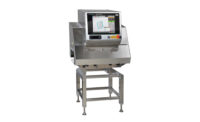Are you part of a dairy organization that could use an infusion of growth in sales, revenue and profitability? Have sales of your product line not been fully realized? Is your product category on the decline? Are you losing market share to direct competitors? Are you interested in rejuvenating your company with new ideas, new products and new processes?
If you answered “yes” to even one of these questions, then expanding your innovation pipeline through increased investment in research and development is for you.
Consumers seek what is new
Customers for your products – whether they are foodservice, industrial or retail – are changing to reflect the demands of the rapidly changing consumer marketplace. Consumers want products that are new and different. Consumer lifestyles are changing. Dairy foods must evolve to deliver fresh new messages and consumer value.
Dairy research and development (R&D) can bring tangible and quantifiable benefits. More near-term process R&D can result in improved productivity (increased yields and/or lower product losses), improved product quality and reductions in costs per unit. As dairy ingredient costs rise, productivity improvements are needed to keep the cost-conscious customer.
More near-term product research and development can lead to improvements in product quality attributes (flavor, texture, appearance, nutrition, etc.), shelf life and ingredient costs reductions. Such work can result in line extensions such as new flavors, enhanced nutrient quality, less product spoilage and/or improved shelf life, new packaging options and other product modifications. These improvements can attract new customers or renew interest from existing customers. When they are successful, these activities translate to incremental gains that can increase revenue and/or profitability with relatively small R&D investments.
Intangible benefits of R&D
Such near-term R&D project activities may also have intangible benefits. These activities keep the R&D department active and serve to prime the pump to the innovation pipeline. To achieve incremental benefits, assign some of the R&D team to work with ingredient, equipment and package suppliers at the lab bench or in the pilot plant. Then translate their work to commercial reality in order to realize the full value of the R&D investment.
Such work can sharpen R&D skills and create a R&D environment that can lead to impactful product and process innovation. Under such an environment, creativity, productivity and benefits are heightened throughout the organization and allow the opportunity to realize breakthrough R&D innovations. Timing is everything, but unfortunately it is unpredictable. So staying ready to capitalize on breakthrough innovation opportunities is a key to success.
Breakthrough innovations are game changers. They change the entire business environment. Such breakthrough innovations respond and meet changing lifestyle needs, and often contribute to changing lifestyles. Breakthrough dairy process and product technology innovations have the potential to give a dairy sustainable competitive advantages, which can make it difficult for a competitor’s entry to the marketplace.
Hence, Economics 101 says that such innovation can command high profit margins for longer periods. Make no mistake: breakthrough innovation is not easy. It takes time, patience and commitment. Sometimes it is about connecting the dots and getting creative people to think outside the box and deliver the right product at the right time. Greek yogurt is a perfect example. The basic technology for making Greek yogurt has been around for as long as we have been eating cultured milk products. But it took the right timing, patience and commitment to make this dairy food a game changer.
It is easier to be conservative and stay in the lower-risk R&D activities. But low risk means low return. The real challenge is to stay in the innovation game and to effectively manage higher-risk R&D activities to deliver higher returns.
No budget? No problem
Many dairies have no internal R&D team. They use consultants, suppliers or tap the expertise available at public universities. Our industry is fortunate to have six national dairy centers of excellence that are funded to help drive innovation in milk and milk products. Dairy centers have helped entrepreneurs formulate and optimize novel dairy products. And sometimes, even the largest companies with their own R&D departments seek alternative views or a second opinion.
By working with the dairy centers, you help to support public institutions who train the next generation of dairy scientists and technologists. Learn more about the National Dairy Centers at usdairy.com.
If you still do not believe in the need to evolve your products through R&D investments, let me ask you: How many rotary land-line phones do people buy today?



